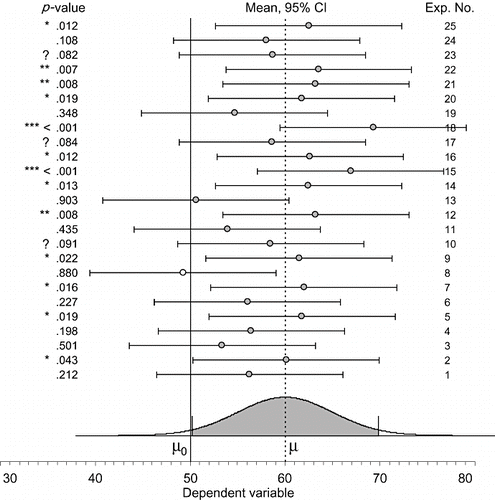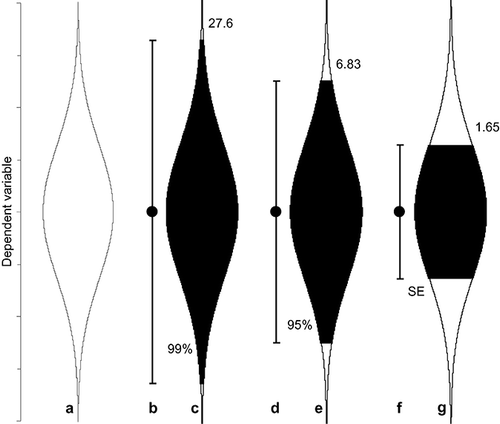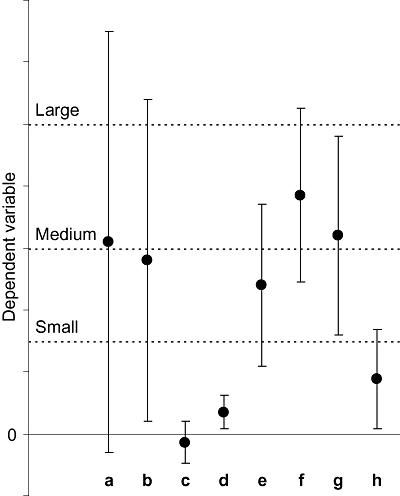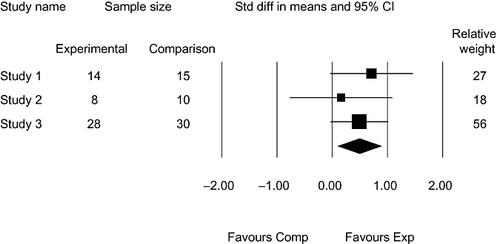Figures & data
Figure 1 Results of 25 replications of a simulated experiment (Exp), numbered at the right. Each comprises a single sample of N = 16 scores, from a normally distributed population with mean µ = 60 and σ = 20. Means (grey dots), and 95% confidence intervals (CIs) are shown. The p‐values are two‐tailed, for a null hypothesis referring to a reference population with µ0 = 50, and σ = 20 assumed known. The population effect size is 10, or 0.5σ, a medium‐sized effect. Triple, double, and single asterisks mark p < .001, .001 < p < .01, and .01 < p < .05, respectively, and ‘?’ marks .05 < p < .10. The mean whose CI does not capture µ is shown as an open circle. The curve is the sampling distribution of the sample mean, and the central 95% of the area under the distribution is shaded.

Figure 2 Conventional error bar and cat's eye figures. Graphic a is the distribution of estimation errors, as in Fig. 1, and its mirror image. Its horizontal width represents the relative likelihood across the full range of values of the dependent variable. Graphics b, d, and f are conventional error bar representations of, respectively, the 99% and 95% CIs, and standard error (SE) bars. Graphics c, e, and g show as black the corresponding parts of the relative likelihood distribution, for those three intervals. The black areas picture the ‘shape’ of the intervals. The numbers at the top indicate the ratio of width at the widest point (the sample mean) and at the end of the black area.

Figure 3 Fictitious means, from independent groups, with their 95% CIs. Reference effect sizes are marked by dotted lines.

Figure 4 Forest plot showing results of three fictitious studies and their meta‐analytic combination. Cohen's d‐values and square symbols are labelled as ‘Std diff in means’ (standardised difference in means). Positive d favours the experimental condition (Exp); negative favours the comparison (Comp). Relative weights are the percentages contributed by the three studies to the overall meta‐analysis. The diamond indicates the 95% CI for the random effects combination of the effect sizes from the three studies. The CMA software (see text) was used to carry out the calculation and produce the figure.
